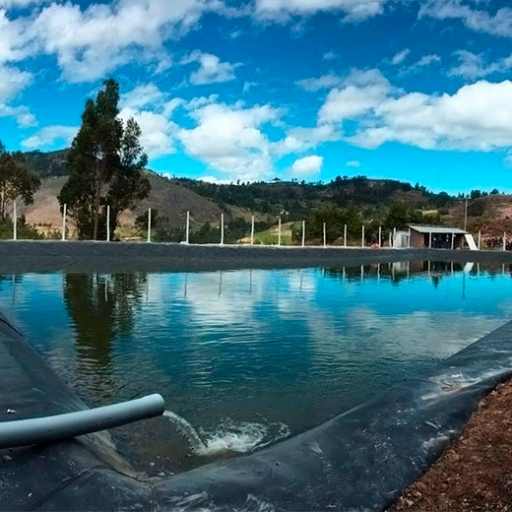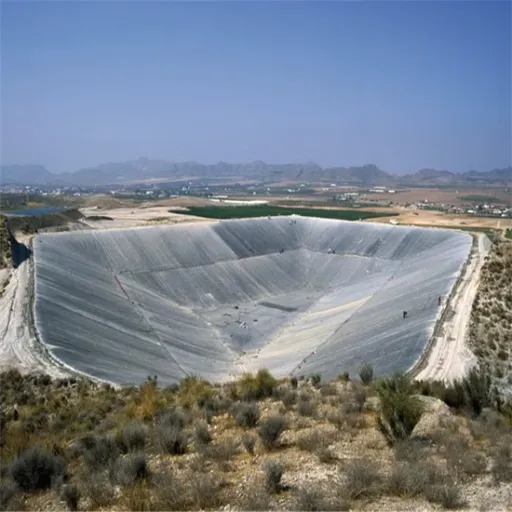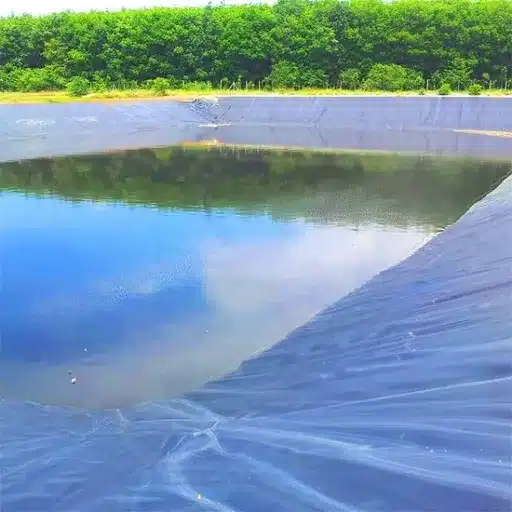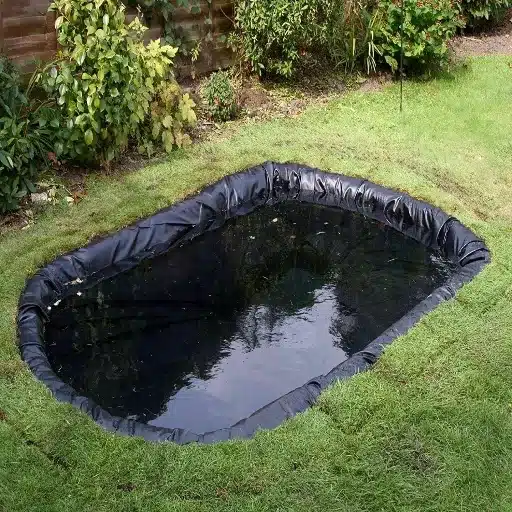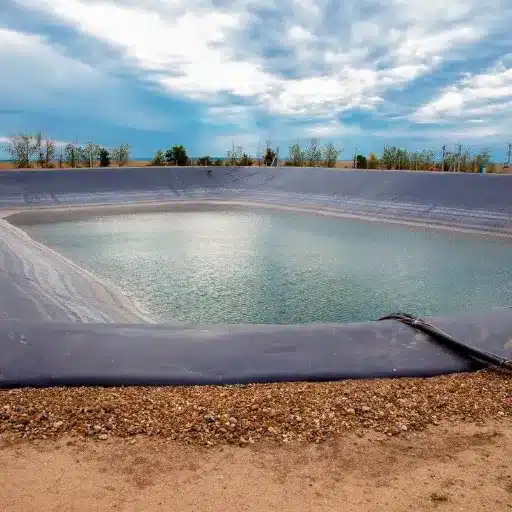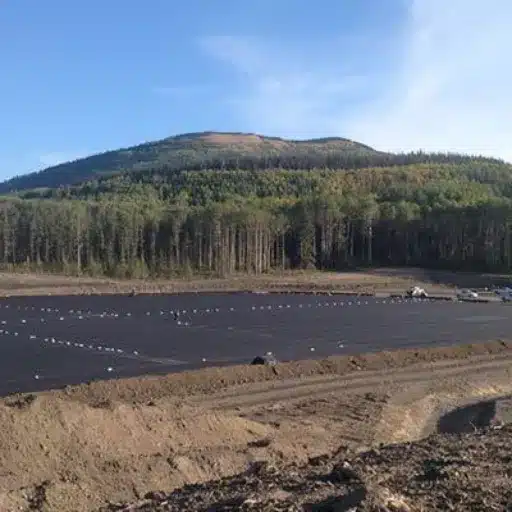Quick Overview: When choosing between HDPE and PVC geomembranes, consider that HDPE offers superior chemical resistance and longevity (30+ years), while PVC provides greater flexibility and easier installation. Your choice depends on project requirements, environmental conditions, and budget constraints.
Introduction to Geomembrane Technology
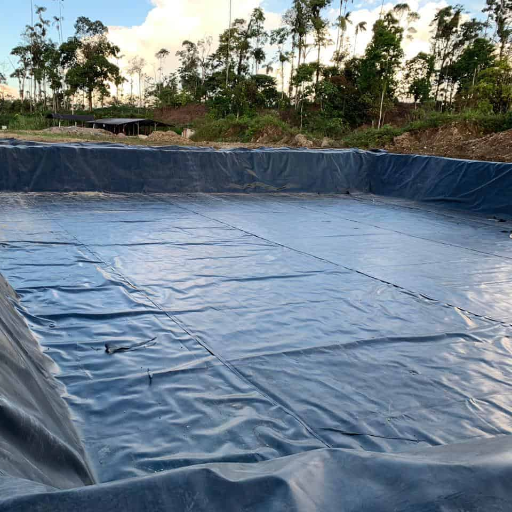
When selecting the right geomembrane for your project, the final decision typically comes down to two popular materials: HDPE (High-Density Polyethylene) and PVC (Polyvinyl Chloride). Both materials have gained widespread acceptance in construction, agriculture, and environmental management due to their unique properties and proven performance.
The differences between these materials can significantly impact project performance, cost-effectiveness, and long-term durability. This comprehensive guide examines the major distinctions between HDPE and PVC geomembranes, helping contractors, engineers, and decision-makers choose the optimal solution for their specific applications.
What is a Geomembrana?
A geomembrane (or geomembrana) is a synthetic membrane liner or barrier designed with extremely low permeability to prevent fluid or gas movement within engineering projects. These barriers are typically manufactured from polymeric materials and serve critical functions in:
- Civil Engineering: Foundation protection and structural support
- Agricultural Applications: Pond lining and irrigation systems
- Environmental Programs: Contamination prevention and waste management
- Mining Operations: Tailings pond lining and chemical containment
Industry Statistics:
- Geomembrane liners are used in approximately 80% of all landfill applications worldwide
- HDPE geomembranes have a projected lifespan of 36+ years under normal environmental conditions
- Manufacturing thickness ranges from 0.5mm to over 3mm for diverse applications
- Premium materials achieve tensile strength exceeding 25 MPa
Critical Importance in Modern Applications
Geomembranes play a vital role in modern construction and environmental protection by serving as barriers that prevent contaminants from reaching soil and groundwater systems. Their applications have expanded significantly across multiple industries:
Environmental Protection
- Landfill Applications: HDPE geomembranes contain leachate and protect ecosystems from hazardous waste
- Leakage Prevention: Well-installed systems achieve leakage rates below 1×10⁻¹²m/s
- Water Conservation: Reduce reservoir and canal water loss by up to 95% through seepage prevention
Industry Growth and Market Trends
Market Data: The global geomembrane market reached USD 2.1 billion in 2021 with a projected compound annual growth rate (CAGR) of 5.8%, driven by environmental regulations and advanced material technologies.
Emerging Applications
- Renewable Energy: Biogas digesters for efficient methane capture and storage
- Aquaculture: Fish farming pond lining for water quality maintenance
- Solar Energy: Reflective pond lining for enhanced energy absorption
Understanding PVC Geomembrana
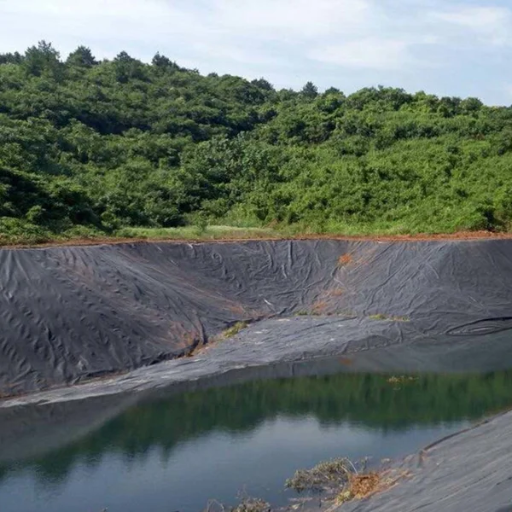
PVC geomembranes have gained popularity due to their exceptional flexibility, ease of installation, and reliable performance across various environmental conditions. These characteristics make them particularly suitable for projects requiring detailed contours and complex surface adaptation.
Key Characteristics and Properties
| Property | Specification | Benefit |
|---|---|---|
| Flexibility | High flexibility at low temperatures | Conforms to irregular surfaces |
| Chemical Resistance | pH levels 2-11 | Suitable for aggressive chemical environments |
| UV Resistance | 20+ years direct sunlight exposure | Enhanced durability in outdoor applications |
| Tensile Strength | 2,000-3,000 psi | Withstands mechanical stress and pressure |
| Elongation at Break | 300%+ | Resists cracking under soil movement |
Advantages of PVC Geomembrana
✅ Key Benefits
- Superior Flexibility: Adapts to complex shapes and irregular surfaces
- Easy Installation: 40% faster installation compared to competing materials
- Cost-Effective: Lower transportation and installation costs due to lightweight design
- Chemical Resistance: Excellent performance in corrosive environments
- Weldability: Simple welding process for seamless joins
- Recyclability: Supports sustainable construction practices
Performance in Demanding Applications
- Puncture Resistance: Maintains integrity under high mechanical stresses
- Pressure Tolerance: Leak-free performance in buried installations under hydraulic pressure
- Temperature Stability: Consistent performance across varying environmental conditions
Sustainability Impact:
Recent reports indicate PVC recycling rates have increased significantly, with some regions achieving approximately 20% recycling rates for PVC construction materials annually, contributing to reduced landfill waste and lower carbon emissions.
HDPE vs. PVC: Comprehensive Comparison
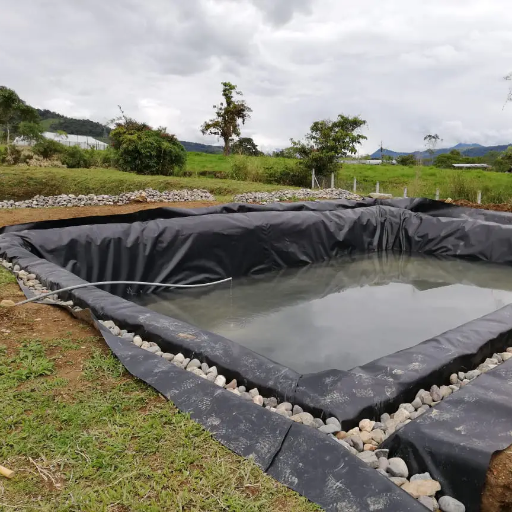
The choice between HDPE and PVC geomembranes requires careful consideration of multiple factors including application requirements, environmental conditions, project complexity, and budget constraints.
Durability and Longevity Analysis
| Factor | HDPE Geomembrane | PVC Geomembrane |
|---|---|---|
| Expected Lifespan | 30+ years (up to 100 years under ideal conditions) | 20-25 years with proper maintenance |
| UV Resistance | Excellent – maintains integrity in direct sunlight | Good with UV stabilizers – requires proper formulation |
| Chemical Resistance | Superior resistance to aggressive chemicals | Good resistance within pH 2-11 range |
| Temperature Range | -40°F to 176°F (-40°C to 80°C) | Good performance in moderate temperature ranges |
| Tensile Strength | 25-33 MPa | 2,000-3,000 psi (14-21 MPa) |
Installation and Performance Characteristics
HDPE Advantages
- Superior chemical resistance
- Longer service life
- Excellent UV stability
- Higher tensile strength
- Better performance in extreme temperatures
- Lower permeability rates
PVC Advantages
- Greater flexibility and conformability
- Easier installation process
- Better adaptation to irregular surfaces
- Superior weldability
- Lower initial costs
- Faster project completion
Environmental Impact and Sustainability
HDPE Environmental Profile
- Production Emissions: Lower greenhouse gas emissions during manufacturing
- Recyclability: High recycling potential with rates reaching 30% in some regions
- Longevity: Reduced replacement frequency minimizes environmental impact
- End-of-Life: Easier recycling process compared to PVC
PVC Environmental Considerations
- Manufacturing: Higher environmental footprint due to chlorine and VCM content
- Improvements: Modern formulations use phthalate-free plasticizers
- Recycling Progress: Initiatives achieving approximately 10% recycling rates
- Decomposition: Longer natural decomposition period requires proper disposal
Recent Innovations and Future Trends
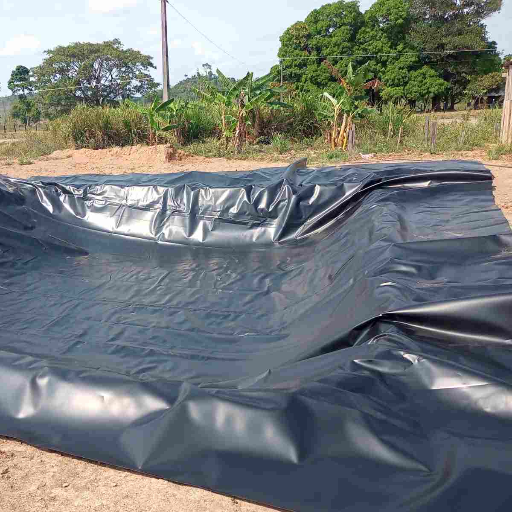
Advanced Materials and Manufacturing
The geomembrane industry continues to evolve with innovative materials and manufacturing processes designed to enhance performance while reducing environmental impact:
Next-Generation Materials
- Reinforced Polyethylene (RPE): 40-year service life with superior strength-to-weight ratios
- Multi-layer Co-extrusion: Combines different material properties in single geomembrane
- Bio-based Additives: Reduced carbon footprint through sustainable components
- Biodegradable Options: Short-term applications with minimal environmental impact
Manufacturing Innovations
- Thermal Welding Technology: Seamless, leak-proof joints
- Improved Uniformity: Enhanced thickness consistency through advanced extrusion
- Quality Control: Rigorous testing ensures material integrity
Market Projections:
The global geomembrane market is expected to grow from USD 2.1 billion (2021) to USD 3.1 billion (2026), representing a CAGR of approximately 8.3%, driven by increased adoption in mining, agriculture, and water management sectors.
Emerging Application Trends
Waste Management Evolution
- Landfill Protection: Modern liners prevent 95%+ of leachate contamination
- Advanced Containment: Multi-barrier systems for enhanced security
- Smart Monitoring: Integration with IoT sensors for real-time performance tracking
Water Resource Management
- Conservation Focus: HDPE geomembranes reduce irrigation canal water loss by 30%
- Reservoir Applications: Large-scale water storage projects
- Aquaculture Growth: Sustainable fish farming operations
Renewable Energy Applications
- Solar Energy: Reflective pond lining for enhanced light absorption
- Biogas Production: Efficient methane capture in digesters
- Energy Storage: Containment systems for renewable energy infrastructure
Selection Guidelines and Recommendations
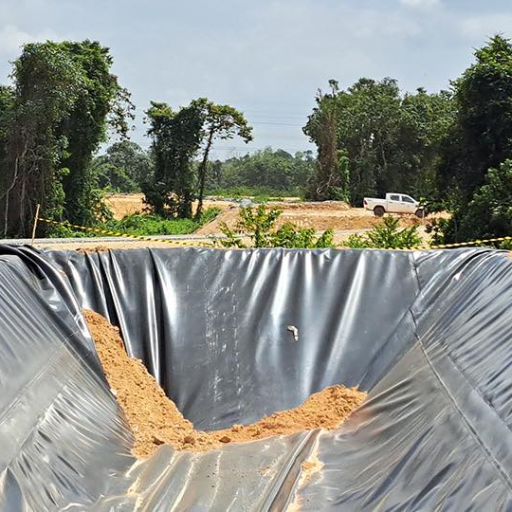
When to Choose HDPE Geomembrane
- Long-term projects requiring extended service life (30+ years)
- Applications involving aggressive chemicals or extreme temperatures
- Environmental protection projects where durability is critical
- Landfill liners and hazardous waste containment
- Projects prioritizing low maintenance and lifecycle costs
When to Choose PVC Geomembrane
- Projects requiring adaptation to complex shapes and irregular surfaces
- Applications where installation speed is critical
- Decorative water features and landscaping projects
- Budget-conscious projects with shorter-term requirements
- Applications requiring frequent access for maintenance
Reference Sources
- BPM Geomembrane
- Title: “What is Geomembrana in HDPE and Its Applications”
- Description: This source explains the specifications, applications, and benefits of HDPE geomembranas, focusing on their use in landfills, mining, and water containment.
- Link: BPM Geomembrane
- Lucintel Market Report
- Title: “Geomembrane Market Size, Share & Analysis to 2030”
- Description: This report highlights the major growing segments of the geomembrane market, including waste management, water management, and mining, providing insights into market trends and applications.
- Link: Lucintel Market Report
- Polaris Market Research
- Title: “Geomembranes Market Trends & Growth Opportunity 2024”
- Description: This source discusses the growth opportunities and market trends for geomembranas, including their projected market value and applications in various industries.
- Link: Polaris Market Research
Frequently Asked Questions
What are the main differences between HDPE and PVC geomembranes?
HDPE offers superior chemical resistance, longevity (30+ years), and UV stability, making it ideal for harsh environments. PVC provides greater flexibility, easier installation, and lower initial costs, making it suitable for projects requiring detailed contours and faster completion.
How do geomembrane liners prevent seepage?
Geomembrane liners create a waterproof barrier that prevents liquid movement between different areas. High-quality HDPE and PVC systems, when properly installed, can achieve extremely low permeability rates and maintain containment integrity under various environmental conditions.
What thickness specifications are recommended for different applications?
HDPE geomembrane liners typically range from 0.75mm to 2.0mm thickness, while PVC systems are available in similar ranges. The selection depends on specific application requirements, environmental conditions, and mechanical stress expectations.
How long do geomembranes last in different environments?
HDPE geomembranes can last 30+ years under normal conditions and up to 100 years under ideal circumstances. PVC geomembranes typically provide 20-25 years of service with proper maintenance. Actual lifespan depends on environmental factors, installation quality, and application-specific stresses.
Which material is more environmentally friendly?
HDPE generally has a lower environmental footprint due to reduced greenhouse gas emissions during production and higher recyclability rates (up to 30% in some regions). However, both materials contribute to environmental protection by preventing contamination and supporting sustainable infrastructure development.
Conclusion
The choice between HDPE and PVC geomembranes ultimately depends on your specific project requirements, environmental conditions, and long-term objectives. HDPE excels in applications requiring maximum durability, chemical resistance, and long-term performance, while PVC offers advantages in flexibility, installation ease, and initial cost-effectiveness.
Both materials have proven their value across diverse applications and continue to evolve through technological innovations. Consider consulting with geomembrane specialists to ensure optimal material selection for your specific application, taking into account factors such as environmental conditions, project lifespan, installation requirements, and sustainability goals.
Expert Recommendation: For critical environmental protection projects with long-term requirements, HDPE typically provides superior value despite higher initial costs. For projects requiring flexibility, rapid installation, or complex surface adaptation, PVC often represents the optimal choice.

